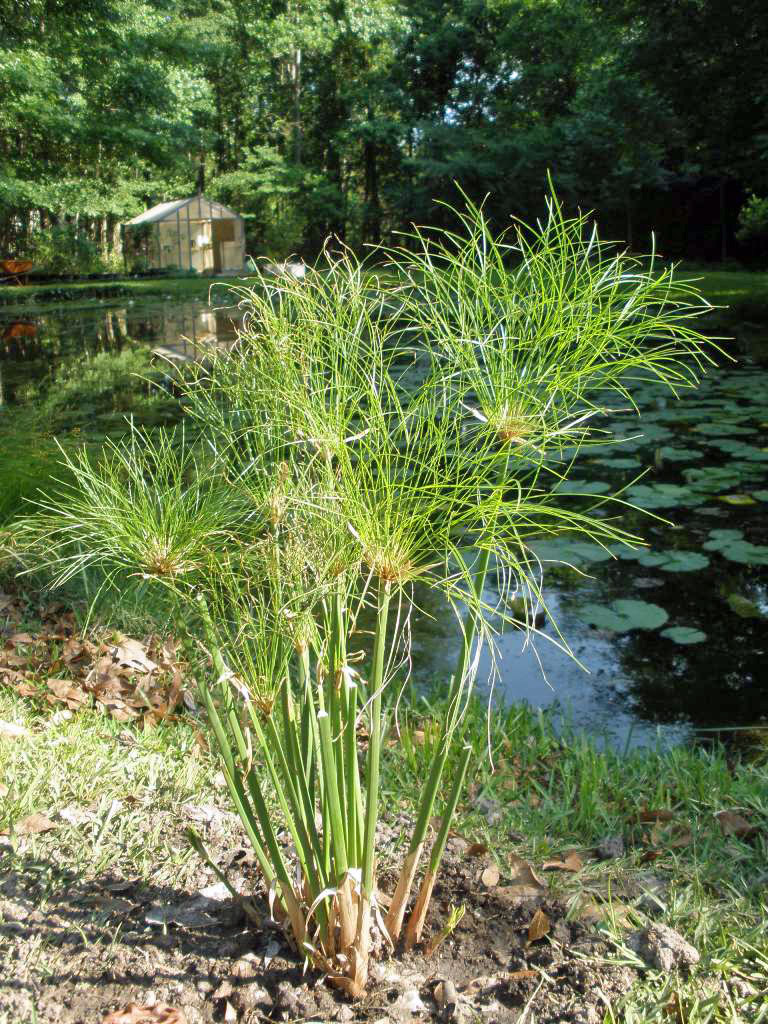

It is therefore incorrect to describe the plants as leafless. The younger parts of the rhizome are covered by red-brown, papery, triangular scales, which also cover the base of the culms and represent reduced leaves. The culms are connected by stout horizontal rhizomes which creep along the substrate under water and are anchored by numerous roots. The stalks elongate later and bend gracefully downward under their own weight so that the cluster becomes almost spherical in shape.ĭuring summer these stalks bear small brown spikelets (groups of flowers) and eventually numerous tiny dark brown fruits are borne in the axils of glumes (tiny scales). Each is topped by a dense cluster of thin, bright green, shiny stalks, which resemble a feather duster when young. Re-pot the new plants and grow them as usual.The most conspicuous feature of the plants are the bright green, smooth, rounded culms (flowering stems) which are up to 40 mm thick at the base and may be up to 5 m tall in ideal conditions. Cut apart the papyrus rhizomes into groups of two or three. Wait until the danger of frost has passed and un-pot or dig up the plant. You can grow and share your papyrus plant through division in spring. In the correct zones with light and moist conditions, care of papyrus plant is easy for even a novice gardener.

Papyrus grass has no damaging pests or diseases except rust fungus, which will discolor the stems and foliage. You can give it a balanced fertilizer in spring to support the growth of the huge stems. Pruning is not necessary except to remove errant or broken stems. Mulching in zone 8 can help protect the tender roots but the foliage will likely die back in winter. Papyrus need little extra care to thrive, provided it is kept moist. Even in their native conditions, the plant does not easily spread by seed. Papyrus seeds do not readily germinate and can take a month or more to sprout. The plant needs to be kept moist, if not submerged.

It can also be planted directly into 3 feet (1 m.) of muddy substrate to hold the heavy stems upright. Papyrus is usually planted by rhizomes in moist, fertile soil in pots and then submerged in an aquatic environment.
Egyptian papyrus plant full#
It prefers full sun but can also be raised in partial shade. Papyrus is a vigorous grower that can grow up to 16 feet tall in its native habitat but the ornamental selections are typically a more modest 3-6 feet. Papyrus has no frost tolerance and should be moved indoors for the winter. The stems are rigid and triangular and have a white pith inside. Papyrus can grow up to 10 feet (3 m.) tall from rhizomes. These sprays of foliage radiate out like the spokes in an umbrella. The plant is called umbrella plant because it has a grass-like habit with sprays of foliage at the top of the stems. Papyrus plant is suitable for USDA plant hardiness zones 8 to 10 and requires a full sun location, in shallow water or riparian areas. Umbrella plant or bulrush are other names for the plant. What is papyrus? It is a plant in the genus Cyperus, which is native to Madagascar. There are numerous names for papyrus grass. This fast growing plant would be an excellent addition to a water garden or naturalized bog area. In most zones, papyrus is an annual or half-hardy perennial. You can grow papyrus from seed or division. The plant is considered a sedge and favors moist, warm environments. Papyrus grass is in a genus of over 600 different plants from around the world. Papyrus plants were used as paper, woven goods, food, and fragrance. Papyrus Plant Tags: aakheperure, papyrus, papyrus frieze, ancient egypt, ancient egyptian, autumn colours, egyptology, neutral, pattern, plant, marsh, nile. Papyrus was one of the most important plants in ancient civilized Egypt.


 0 kommentar(er)
0 kommentar(er)
